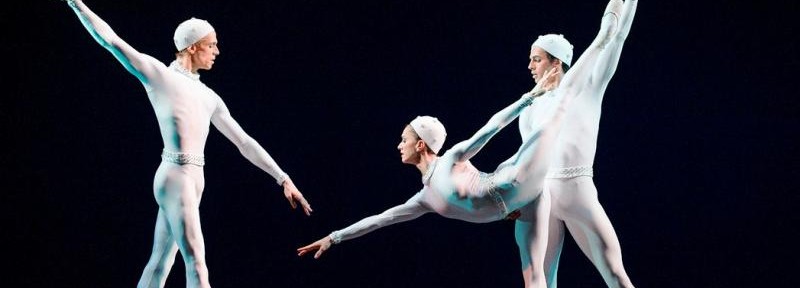Genius does not mean having no influences. Monotones, one of the very greatest of Frederick Ashton’s ballets, is heavily influenced by other works: by George Balanchine’s Theme and Variations and Apollo, by Marius Petipa’s La Bayadère. And it in turn has influenced other great works: Kenneth MacMillan’s searing Gloria would not exist without this unearthly, moon-calm vision.
Monotones II, the second or “white” half, was created first, a gala piece which defies the usual fate of gala pieces. The starkness, the heroic simplicity and grace of this trio was immediately apparent, and Ashton choreographed a frontispiece, as it were, to introduce it. Monotones II features a woman and two men, and thus I was created to mirror its shape by being choreographed for two women and one man (all ably danced last night by, for I, Emma Maguire, Akane Takada and Dawid Trzensimiech; and for II, Marianela Nuñez, Federico Bonelli and Edward Watson).
The ebb and pulse of Erik Satie’s Gymnopédies and Gnossiennes suites permits Ashton to produce ribbons of dance: in Monotones I, a back-and-forth pull-push effect, at its most simple and beautiful in the travelling arabesques, the women then the man leading and returning, as though tied with invisible bonds; Monotones II is a more liquid unfurling of linked arms and posed arabesques, so seemingly unstoppable that, like the entry of the Shades in La Bayadère, the viewer feels bereft when the series ends.
Two other gala pieces feature on this Royal Ballet Ashton commemoration (it is now a quarter-century since his death). The “Meditation” from Thaïs is a pas de deux that takes Massenet’s well-known violin intermezzo and does, well, not much with it. The always valiant Leanne Benjamin does what she can, but her partner, Valeri Hristov, was not at his best last night, and was additionally burdened by Anthony Dowell’s Peter-Pan-does-the-Orient costume.
By contrast, Yuhui Choe and Alexander Campbell made fine work of the Voices of Spring duet created for a production of Die Fledermaus. Campbell’s neat, beaten footwork was a pleasure (as is his Tintin-style quiff), and Choe’s little farewell flutter of her arms in the final lift was as joyous as it was unexpected.
The star-power for the evening, however, was in Marguerite and Armand, Ashton’s retelling of the Alexandre Dumas story of La dame aux camélias. Originally choreographed for Margot Fonteyn and Rudolf Nureyev, it is heavy on attitudinizing, light on choreography, and apart from the pleasure of seeing Tamara Rojo (in her formal farewell to the Royal Ballet) and Sergei Polunin (in his formal let’s-make-friends-again return), the piece wears badly, with more dated costumes, this time by Cecil Beaton. (Do Marguerite’s admirers demand hardship pay for appearing in public in those dreadful wigs?)
A patchy bill, therefore, but for the pleasure of Monotones, so rarely performed, almost anything is endurable.
